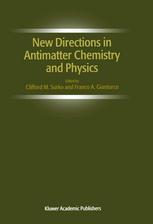

Most ebook files are in PDF format, so you can easily read them using various software such as Foxit Reader or directly on the Google Chrome browser.
Some ebook files are released by publishers in other formats such as .awz, .mobi, .epub, .fb2, etc. You may need to install specific software to read these formats on mobile/PC, such as Calibre.
Please read the tutorial at this link: https://ebookbell.com/faq
We offer FREE conversion to the popular formats you request; however, this may take some time. Therefore, right after payment, please email us, and we will try to provide the service as quickly as possible.
For some exceptional file formats or broken links (if any), please refrain from opening any disputes. Instead, email us first, and we will try to assist within a maximum of 6 hours.
EbookBell Team

4.7
66 reviewsThis volume is the outgrowth of a workshop held in October, 2000 at the Institute for Theoretical Atomic and Molecular Physics at the Harvard- Smithsonian Center for Astrophysics in Cambridge, MA. The aim of this book (similar in theme to the workshop) is to present an overview of new directions in antimatter physics and chemistry research. The emphasis is on positron and positronium interactions both with themselves and with ordinary matter. The timeliness of this subject comes from several considerations. New concepts for intense positron sources and the development of positron accumulators and trap-based positron beams provide qualitatively new experimental capabilities. On the theoretical side, the ability to model complex systems and complex processes has increased dramatically in recent years, due in part to progress in computational physics. There are presently an intriguing variety of phenomena that await theoretical explanation. It is virtually assured that the new experimental capabilities in this area will lead to a rapid expansion of this list. This book is organized into four sections: The first section discusses potential new experimental capabilities and the uses and the progress that might be made with them. The second section discusses topics involving antihydrogen and many-body phenomena, including Bose condensation of positronium atoms and positron interactions with materials. The final two sections treat a range of topics involving positron and positronium interactions with atoms and molecules.